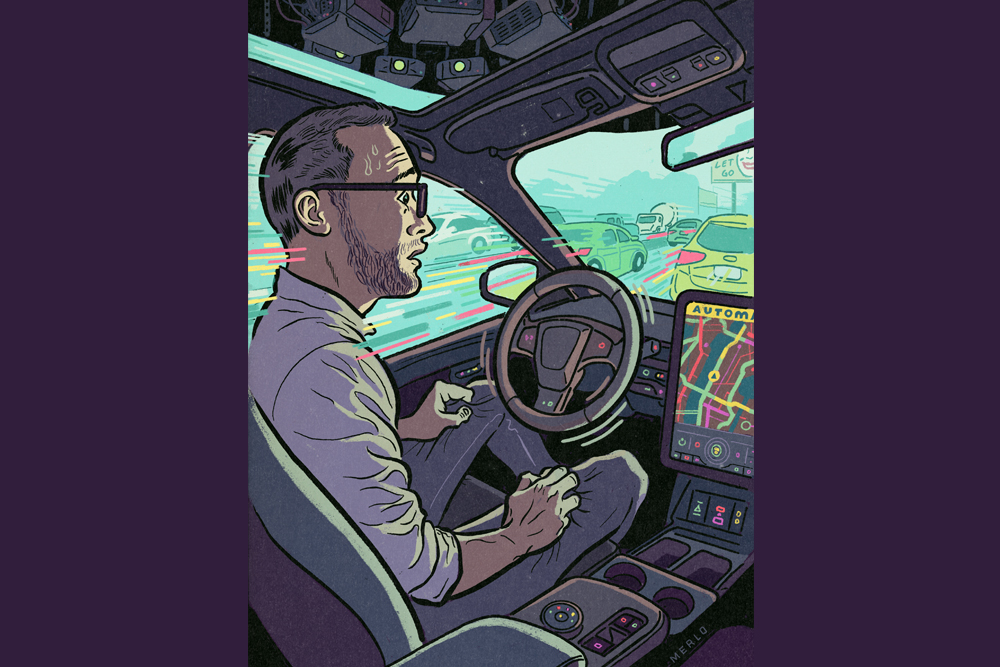Checking my side and rearview mirrors, adjusting my seat belt, and scanning the environment around me, I peer into the road, ready for the drive ahead. Below me are the standard accelerator and brake pedals, and beside me is the shifter. Outside the car is darkness, with a wisp of chilliness in the air that causes my teeth to chatter.
Seated next to me in the passenger seat is Eric Jackson ’04 MA, ’08 Ph.D., tall and skinny and describing to me, in his calm, assured voice, the various parts and features of the car that are unfamiliar to me. When Jackson steps out of the car and I’m left alone, with other cars speeding by me and the city bustling around me, my nervousness heightens.
Normally, I wouldn’t be so nervous driving in a new car, but there’s something different about this Ford Focus. For starters, it is inside a building — the cityscape I see is projected on a wall. And if I were to pop the hood there would be an empty space where the engine used to be.
Why? Because this is not a car at all; rather it is a full-sized autonomous driving simulator. A simulator capable of running driver behavior experiments, which is what I’m here to test and discuss with Jackson, a civil engineering professor and executive director of the Connecticut Transportation Institute and its Connecticut Transportation Safety Research Center.
As Jackson exits the car and starts to walk away, I ask him why we don’t have these cars on the road yet. He says that while the autonomous technology is pretty advanced, the unanswered societal questions surrounding the technology are causing a major roadblock.



